The Huntingdon Willow, also known as Swallow-tailed Willow or White Willow, is a member of the Salicaceae family. Its species name, alba, reflects its striking pale appearance. This woody plant has a long history, originating from Europe, North Africa, and Central Asia, where it has been cultivated for centuries.
Renowned for its lightweight yet durable wood, white willow has found practical applications in crafting items like baskets and cricket bats. Its bark contains tannins, historically used in leather production. The plant’s significance dates back to ancient times, with references from Hippocrates and Pliny the Elder underscoring its enduring value in human culture and utility.
With its deep-rooted history and versatile uses, white willow remains an important species in both horticulture and industry.
| Common name | Huntingdon Willow, Swallow-tailed Willow, White Willow |
| Botanical name | Salix alba |
| Family | Salicaceae |
| Species | alba |
| Origin | Europe, North Africia, and Central Asia |
| Life cycle | Woody |
| Plant type | Tree |
| Hardiness zone | 2, 3, 4, 5, 6, 7, 8, 9 |
| Sunlight | Full Sun |
| Maintenance | High |
| Soil condition | Clay |
| Soil ph | Acid |
| Drainage | Well-Drained |
| Growth rate | Fast |
| Spacing | more than 60 ft. |
| Harvest time | Fall |
| Flowering period | Spring |
| Height | 5- 70 ft. |
| Flower color | Gold, Yellow |
| Leaf color | Green |
| Stem color | Gold, Yellow |
| Fruit type | Capsule |
| Flower benefit | Showy |
| Garden style | Cottage Garden |
| Uses | Pond |
I. Appearance and Characteristics
Salix alba, the white willow, is a species of willow native to Europe and western and central Asia. The name derives from the white tone to the undersides of the leaves.
It is a medium to large deciduous tree growing up to 10–30 m tall, with a trunk up to 1 m diameter and an irregular, often-leaning crown. The bark is gray-brown and is deeply fissured in older trees. The shoots in the typical species are gray-brown to green-brown.
The leaves are paler than most other willows because they are covered with very fine, silky white hairs, in particular on the underside; they are 5–10 cm long and 0.5–1.5 cm wide.
The flowers are produced in catkins in early spring and are pollinated by insects. It is dioecious, with male and female catkins on separate trees; the male catkins are 4–5 cm long, the female catkins 3–4 cm long at pollination, lengthening as the fruit matures. When mature in midsummer, the female catkins comprise numerous small (4 mm) capsules, each containing numerous minute seeds embedded in silky white hairs, which aids wind dispersal.
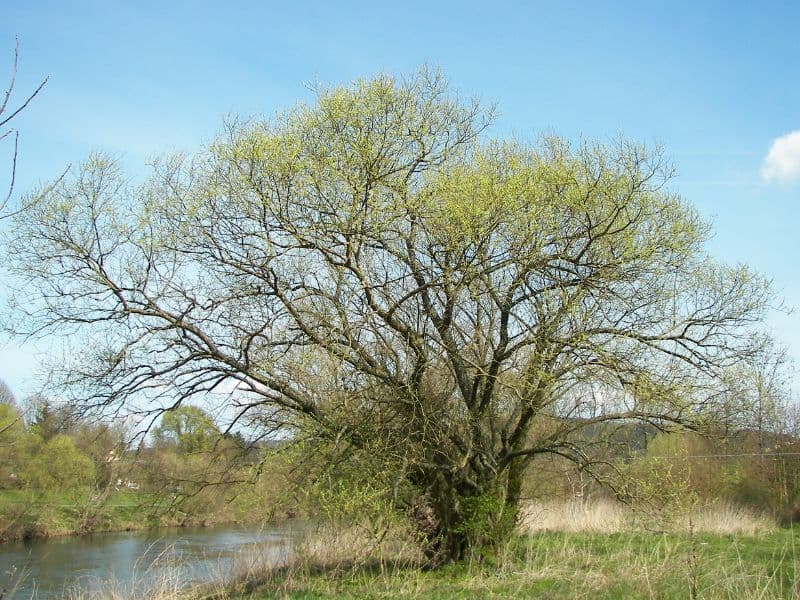
Like all willows, Salix alba is usually to be found in wet or poorly-drained soil at the edge of pools, lakes or rivers. Its wide-spreading roots take up moisture from a large surrounding area.
White willows are fast-growing but relatively short-lived, being susceptible to several diseases, including watermark disease caused by the bacterium Brenneria salicis (named because of the characteristic ‘watermark’ staining in the wood; syn. Erwinia salicis) and willow anthracnose, caused by the fungus Marssonina salicicola. These diseases can be a serious problem on trees grown for timber or ornament.
It readily forms natural hybrids with crack willow Salix fragilis, the hybrid being named Salix × rubens Schrank.
II. How to Grow and Care
Sunlight
White willow thrives best in full sun conditions, where it receives unobstructed light for the majority of the day. This optimal light intensity is critical for white willow’s vigorous growth, ensuring robust health and maximum photosynthetic efficiency. While white willow possesses adaptability to less than ideal conditions, its tolerance extends to partial sun, where it still performs satisfactorily though potential growth may be somewhat reduced.
Lack of sufficient light may lead to leggy growth and reduced vitality. Outdoors, white willow should be planted in open spaces that provide ample sunlight to cater to its high light demand.
Temperature and Humidity
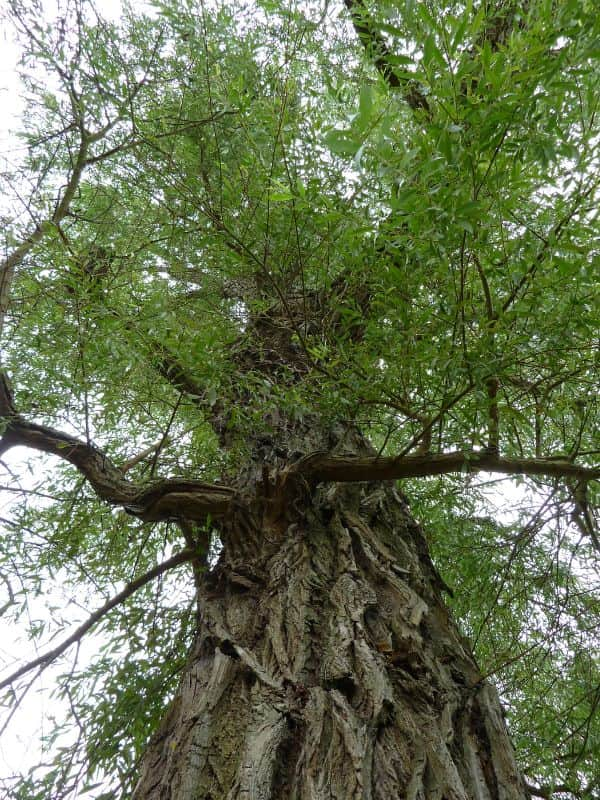
White willow is a very winter-hardy tree that favors a temperate climate. It does better in a cooler climate than in a hot, humid climate. It is one of the latest trees to drop its leaves and one of the first whose leaves emerge in the spring. It is able to adapt to humid conditions.
Watering
Because white willow needs plenty of water, it should only be planted in a location where the soil is naturally moist. In every other planting location, it will create an ongoing obligation for you to water it regularly, as the tree cannot withstand dry conditions. And if no water is present, the tree roots will seek a water source, creating problems with nearby pipes or sewer lines.
Soil
The soil for white willow should be rich and have excellent moisture retention while being well-draining. White willow thrives in moisture and can withstand temporary flooding but will not survive dry soil.
The tree is adaptable to a wide pH range between 5.5 and 8.0.
Fertilizing
For white willow, opt for balanced nutrition fertilizers, applying annually in early spring. High nitrogen options can boost growth – particularly important during the active growing phase. About 1 inch of compost or a slow-release fertilizer as per label instructions supports vigor and resilience. Fertilizing during the dormant season is unnecessary. Over-fertilizing can harm roots and nearby water sources; always follow recommended rates. Mulching after fertilization retains moisture and nutrients. Observe white willow’s response to adjust practices and ensure healthy development.
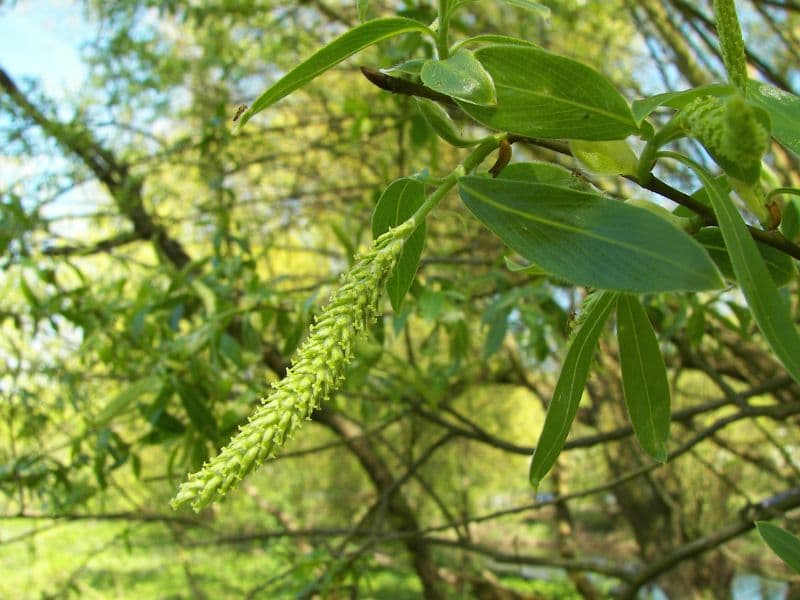
Pruning
The white willow grows fast under suitable conditions. Timely trimming of residual, dead and side branches can increase air permeability and light transmittance, so as to avoid providing breeding places for diseases and insect pests. For seedlings and newly-born willows, one main branch should be selected and kept during pruning, while any redundant lateral branches and buds should be trimmed, so that the main stem can grow thick in an upward direction.
For head-removed plants, main branches and new buds in 3-4 directions should be reserved consciously according to personal preference in the cross section, so as to maintain a more graceful shape. Trimming incisions should be smooth and coated with tung oil – this will protect the incision and encourage faster healing. Pruning is best carried out in early spring, late fall and winter.
Propagation
It is highly discouraged to propagate the straight species for planting in a residential landscape. However, It is possible to propagate cultivars from softwood cuttings in late spring or early summer.
- Using a sharp knife, cut a new 4-inch shoot below a leaf note, ideally early in the morning.
- Remove the lowest leaves. Dip the cut end in rooting hormone.
- Fill a 4-inch pot filled with damp soilless mix. Insert the cutting deeply into the pot with just the top two leaves just above the surface. Water it well.
- Cover the cutting with a clear plastic dome or a perforated plastic bag. Place it in a location with indirect light, out of direct sunlight.
- Keep the soil evenly moist and also mist the cutting twice a week.
- After the cutting has rooted, it is safe to place it in full sun. Water it regularly and never let the soil dry out.
- Wait until it has grown into a vigorous plant before transplanting it into the landscape.
Potting and Repotting
Due to its large size and fast growth, white willow is not suitable to be grown in containers.
Overwintering
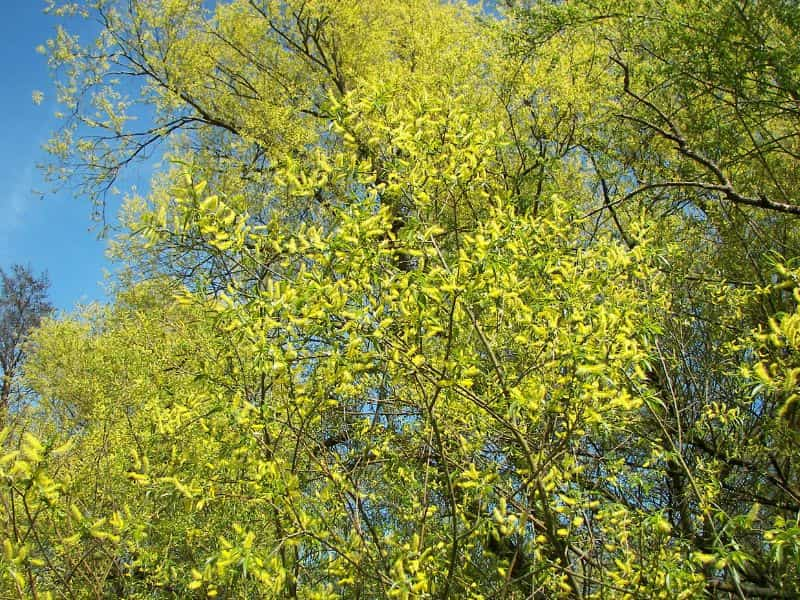
White willow needs no winter protection. It is a tough tree able to survive northern winters in as low as zone 2.
Pests and Diseases
White willows are susceptible to various diseases and insect problems. Most insects are just nuisances and do not cause any real issues. The most common pests you will see are aphids, willow scale, borers, and lace bugs, flea beetles, and sawfly larvae.
Potential diseases include anthracnose, rust, crown gall, cankers, leaf spots, and blight which can often be prevented or controlled with proper pruning and regular cleanup of debris around the tree.
III. Uses and Benefits
- Ornamental uses
White willow (Salix alba) is a popular garden tree loved for its broad, open crown which makes it well suited for large gardens or parklands. With its attractive silver-green leaves, this makes for a good landscape tree. Some plants that pair well with white willow include bog rosemary, Japanese iris, and rose mallow.
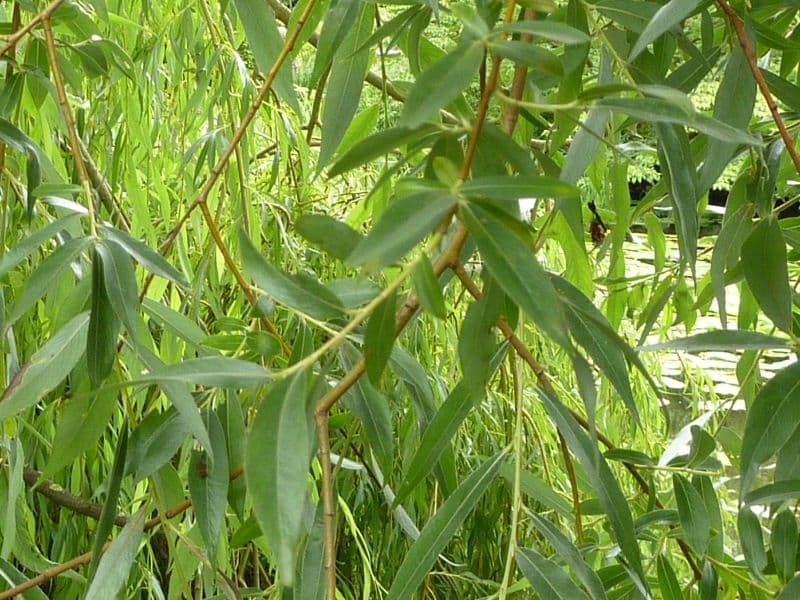
- Medicinal uses
Willow (of unspecified species) has long been used by herbalists for various ailments, although it is a myth that they attribute to it any analgesic effect. One of the first references to White Willow specifically was by Edward Stone, of Chipping Norton, Oxfordshire, England, in 1763. He ‘accidentally’ tasted the bark and found it had a bitter taste, which reminded him of Peruvian Bark (Cinchona), which was used to treat malaria.
After researching all the ‘dispensaries and books on botany,’ he found no suggestion of willow ever being used to treat fevers and decided to experiment with it himself. Over the next seven years he successfully used the dried powder of willow bark to cure ‘agues and intermittent fevers’ of around fifty people, although it worked better when combined with quinine.
Stone appears to have been largely ignored by the medical profession and herbalists alike. There are reports of two pharmacists using the remedy in trials, but there is no evidence that it worked. By the early 20th century, Maud Grieve, an herbalist, did not consider White Willow to be a febrifuge. Instead, she describes using the bark and the powdered root for its tonic, antiperiodic and astringent qualities and recommended its use in treating dyspepsia, worms, chronic diarrhoea and dysentery. She considered tannin to be the active constituent.
An active extract of the bark, called salicin, after the Latin name Salix, was isolated to its crystalline form in 1828 by Henri Leroux, a French pharmacist, and Raffaele Piria, an Italian chemist, who then succeeded in separating out the acid in its pure state. Salicylic acid is a chemical derivative of salicin and is widely used in medicine. Acetylsalicylic acid (aspirin) is, however, a chemical that does not occur in nature and was originally synthesised from salicylic acid extracted from Meadowsweet, and is not connected to willow.
- Other uses
The wood is tough, strong, and light in weight, but has minimal resistance to decay. The stems (withies) from coppiced and pollarded plants are used for basket-making. Charcoal made from wood was important for gunpowder manufacture. The bark tannin was used in the past for tanning leather. The wood is used to make cricket bats.
S. alba wood has a low density and a lower transverse compressive strength. This allows the wood to bend, which is why it can be used to make baskets. Willow bark contains indole-3-butyric acid, which is a plant hormone stimulating root growth; willow trimmings are sometimes used to clone rootstock in place of commercially synthesized root stimulator. It is also used for ritual purposes by Jews on the holiday of Sukkot.
IV. Types of White Willow
If you have set your mind on a white willow, it is best to plant one of the cultivars. Keep in mind that issues that come with the tree are not eliminated, just mitigated.
- Salix alba var. vitellina: Commonly called golden willow, this variety is grown for its attractive new stems that are golden-yellow before turning brown. It is particularly decorative in the winter. Because of its rapid growth rate—up to eight feet per year—golden willow is often grown as a multi-stemmed shrub and the branches are cut back just above the ground every year.
- Salix alba ‘Tritis’: Named golden weeping willow for its slender, pendulous golden branchlets, this cultivar grows 50 to 75 feet tall but has a slightly smaller width than the species and a rounded crown.
- Salix alba var. caerulea: This is the willow used to make cricket bats, hence its name, cricket-bat willow. It is tall (up to 100 feet at maturity) and fast-growing with a single straight stem, and slightly larger leaves.
- Salix alba ‘Belders’: This male cultivar is just as fast-growing as other white willows, but it is often grown as a pollard willow, which keeps its growth under control. It has. straight or slightly bent trunk and a narrow oval crown.
Find Where to Buy the Best White Willow (Salix alba)

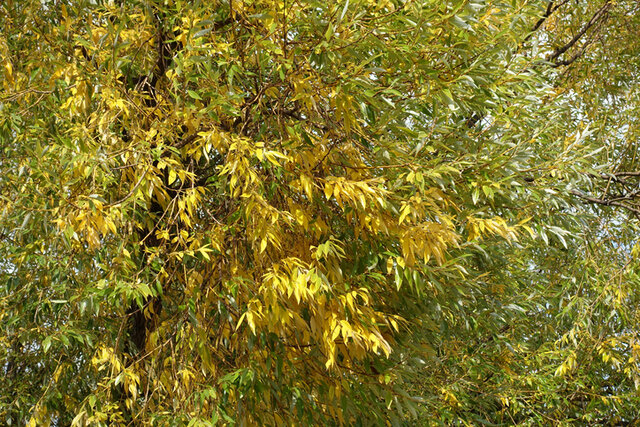



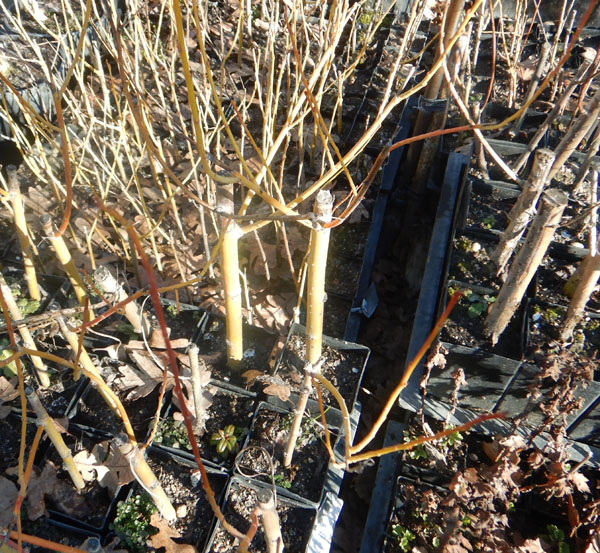












Leave a Reply